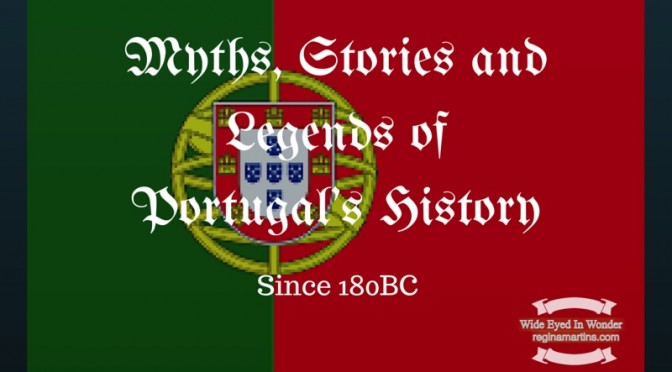The personage of the baker of Aljubarrota is curiously linked to the battle of the same name which took place on August 14, 1385.
Nations need symbols which they can hold on to in times of discord and which they can celebrate in time of peace. It is these symbols that help define the identity of a people.
The lady who was dubbed “The Baker of Aljubarrota” is such a symbol and her contribution to the battle is surrounded by myth and a healthy dose of mystery.
The Baker of Aljubarrota
The Protagonist:
- Brites De Almeida (aka The Baker of Aljubarrota)
The action:
It is not known whether she actually existed or whether she was made up as one of the ways the Portuguese people celebrated their victory over Castile (later Spain) which assured their independence. Had they not won this battle, it is possible that the course of Portuguese history would have been different – in all likelihood we would all be speaking Spanish now…
In any event, what IS known is that the person who baked the town’s bread at the time of the battle was a certain Brites De Almeida, who had a colourful history before falling into the career of baker.
Born to humble parents, she was a what today we would call a tomboy. She was a tall, strong and muscular girl who liked to solve her problems with her fists.
When her parents died she used the little money they left her to buy a sword. This in itself is curious because, not only did girls not carry swords, but they were only carried by noblemen.
She made money by challenging men to sword fights which led to her first spot of trouble with the law – she killed one of her challengers and ended up going on the run. It is said that the challenge went as follows – if he won the fight she would have to marry him; if he lost the fight she would kill him…
She stole a boat to get to Spain but was captured by pirates who sold her to a rich Algerian man. She was not the type of woman to remain imprisioned for long so she convinced two other Portuguse slaves to help her escape and all three ended up in Portugal again.
This time, dressed as a man, she bought a couple of donkeys and became a driver with her own rig.
Trouble followed her wherever she went – she was involved in various fights, and responsible for some deaths in Lisbon.
She ran way again, and this time dressed as a woman, started begging for money and food in front of a bakery in Aljubarrota.
And this, my gentle people, is where it all began.
She caught the attention of the old lady who owned the bakery who recognised Brites’s value as a strong woman to help her in the bakery and she ended up inheriting the bakery when the old lady died.
After the Portuguese defeated the Castilians, Brites led a group of people to chase away the remaining soldiers who were desperately trying to make it back to the border.
Upon her return to the bakery, she found seven (the number differs from telling to telling) Castilian soldiers hiding in her oven.
Without hesitation, she grabbed the large bakers peel and single-handedly walloped each one over the head as they exited the oven – the intensity of the violence as she did this also varies with each telling – I believe that the bakery would not have passed inspection and that the people of Aljubarrota did not have any bread to buy the next day.
The denouement:
Brites did eventually settle down. At the age of 40 she married a rich farmer whom she had long admired and they even had children. I imagine that this was one disciplined and well behaved household…
Every year the Battle of Aljubarrota is celebrated on August 14, 1385, and a baker’s peel had for many years pride of place on the leading float.
Blogging from A to Z – “A” is for The Baker of Aljubarrota.
This link will give you the highlights of the Battle of Aljubarrota.
Discover more from Wide Eyed In Wonder
Subscribe to get the latest posts sent to your email.

That is a great story!
Thank you so much for sharing this with us!
—
Tim Brannan, The Other Side Blog
2015 A to Z of Adventure!
http://theotherside.timsbrannan.com/
Timothy S Brannan recently posted…A to Z of Adventure! D is for Descent into the Depths of the Earth
Thank you!